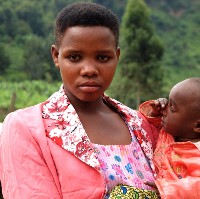01 December 2015
Kampala, Uganda
Demography that matters
Under the title "Demography that matters: How can studies of population and human capital contribute to sustainable development?", Raya Muttarak will present latest research from IIASA’s World Population Program (POP) at UNICEF Uganda. POP addresses the human development dimension of global change. It comprehensively studies the changing size and composition of human populations around the world and analyzes both their impacts and vulnerabilities. In 2014 POP together with the Wittgenstein Centre for Demography and Global Human Capital (IIASA, VID/ÖAW, WU) produced a new set of world population projections. It was published in a massive volume with 1056 pages entitled “World Population and Human Capital in the 21st Century” (eds. W. Lutz, W. Butz and Samir KC) and includes projection results for all countries in the world by age, sex and level of education. It is currently likely the most comprehensive assessment of the global state of knowledge about future population and human capital trends.
Dr Muttarak’s is actively engaged in empirical studies on a variety of topics ranging from the effects of the economic crisis on health, immigrants' integration, to social networks and fertility. Her recent research focuses on: 1) demographic differential vulnerability to impacts of natural disasters/climate change; 2) climate change perception and sustainable lifestyle and consumption; and 3) climate-related migration.
Details:
Date: 1st December (Tuesday), 2015, 3:00-4:30PM
Location: Ground Floor Conference Room, UNICEF Uganda, Plot 9 George Street
Registration and Contact: Registration for external participants will begin at 2:30PM,
Presentation Abstract
This presentation aims to introduce demographic tools and knowledge that can be useful for policy planning and decision making, especially in the area of sustainable development. In designing policies – from urban planning, public health to climate change adaptation–, it is fundamental to know not only the total number of population, but also who and where they are. Applying multi-state population projection methods, we are able to quantify and project population trends by age, sex and education for 171 countries from 2010 to 2100. Through systematic incorporation of population heterogeneity by level of education, it is possible to understand the current patterns of fertility, mortality, economic growth, adaptive capacity and environmental sustainability. This is because human capital has been shown to have strong linkages with human wellbeing and life outcomes. In this talk, I will first describe the mechanisms through which education can contribute to sustainable development and present some empirical evidence showing outcome differentials by level of education. In the second part, I will introduce publicly available online demographic tools that can be readily incorporated into policy planning.

Wittgenstein Centre Data Explorer


